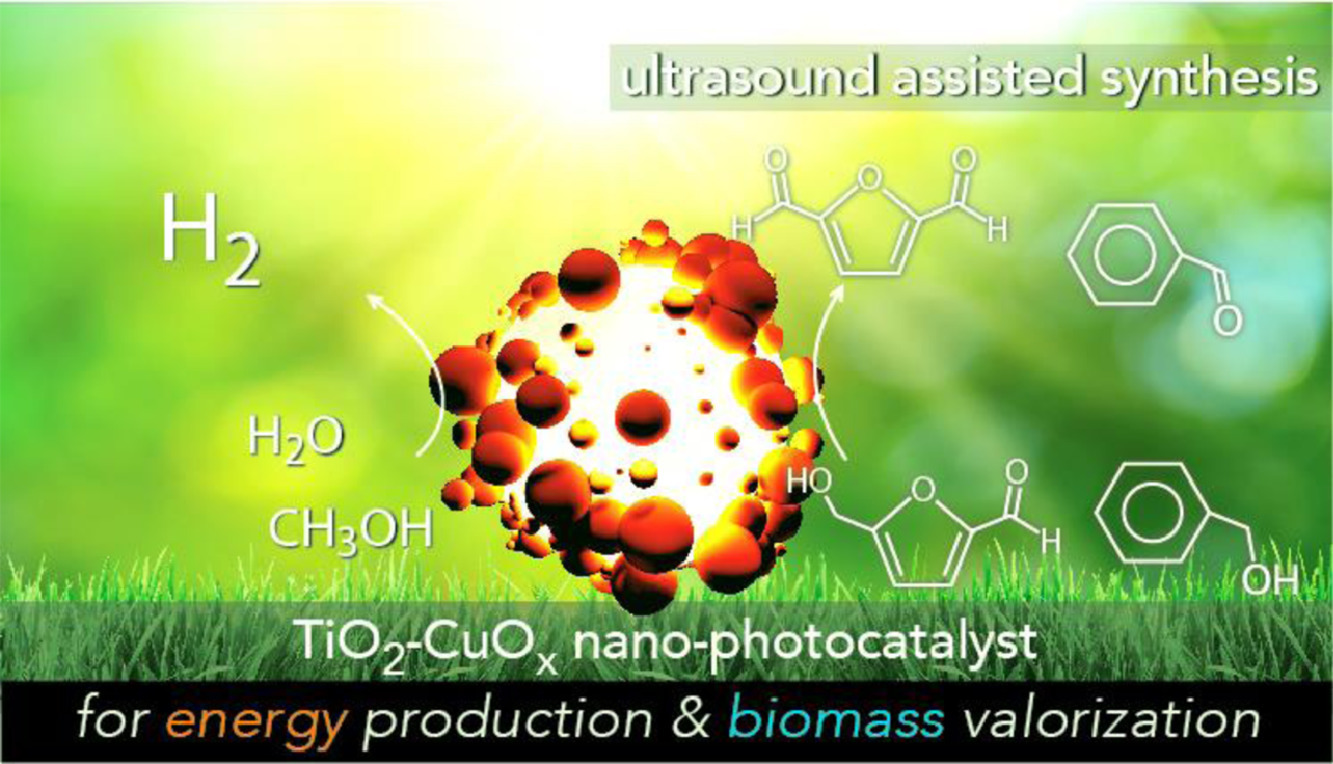Ultrasound-assisted decoration of CuOx nanoclusters on TiO2 nanoparticles for additives free photocatalytic hydrogen production and biomass valorization by selective oxidation
Giannakoudakis, D. A., Qayyum, A., Nair, V., Khan, A., Pradhan, S. R., Prekodravac, J., Rekos, K., LaGrow, A. P., Bondarchuk, O., Łomot, D., Triantafyllidis, K. S., & Colmenares, J. C.
Molecular Catalysis 2021
Abstract
 The herein presented ultrasound-assisted ultra-wet (US-UWet) impregnation synthetic approach was followed in order to avoid the drawbacks of the conventional wet impregnation synthesis. The goal was to homogeneously decorate the surface of the TiO2 nanoparticles with nanometric sized (< 4 nm) clusters of mixed cupric and cuprous oxides. The physicochemical features of the nanocomposite (TiO2CuOx) were determined by high-angle annular dark-field scanning transmission electron microscope (HAADF-STEM), high-resolution transmission electron microscopy (HR-TEM), energy dispersive X-ray (EDX), X-ray photoelectron spectroscopy (XPS), powder X-ray diffraction (XRD), and Diffuse reflectance (DR) spectroscopy. TiO2CuOx showed an enhanced and continuous capability to generate molecular hydrogen upon low power ultraviolet irradiation. The benchmark commercial TiO2 P25 did not reveal any H2 formation under these conditions. TiO2CuOx presented also a high efficiency for the additives-free selective partial oxidation of two well established biomass derived model platform chemicals/building blocks, 5-hydroxymethylfurfural (HMF) and benzyl alcohol (BnOH) to the value-added chemicals 2,5-diformylfuran (DFF) and benzyl aldehyde (PhCHO), respectively. The nanocomposite showed higher DFF and PhCHO yield compared to P25.
The herein presented ultrasound-assisted ultra-wet (US-UWet) impregnation synthetic approach was followed in order to avoid the drawbacks of the conventional wet impregnation synthesis. The goal was to homogeneously decorate the surface of the TiO2 nanoparticles with nanometric sized (< 4 nm) clusters of mixed cupric and cuprous oxides. The physicochemical features of the nanocomposite (TiO2CuOx) were determined by high-angle annular dark-field scanning transmission electron microscope (HAADF-STEM), high-resolution transmission electron microscopy (HR-TEM), energy dispersive X-ray (EDX), X-ray photoelectron spectroscopy (XPS), powder X-ray diffraction (XRD), and Diffuse reflectance (DR) spectroscopy. TiO2CuOx showed an enhanced and continuous capability to generate molecular hydrogen upon low power ultraviolet irradiation. The benchmark commercial TiO2 P25 did not reveal any H2 formation under these conditions. TiO2CuOx presented also a high efficiency for the additives-free selective partial oxidation of two well established biomass derived model platform chemicals/building blocks, 5-hydroxymethylfurfural (HMF) and benzyl alcohol (BnOH) to the value-added chemicals 2,5-diformylfuran (DFF) and benzyl aldehyde (PhCHO), respectively. The nanocomposite showed higher DFF and PhCHO yield compared to P25.



